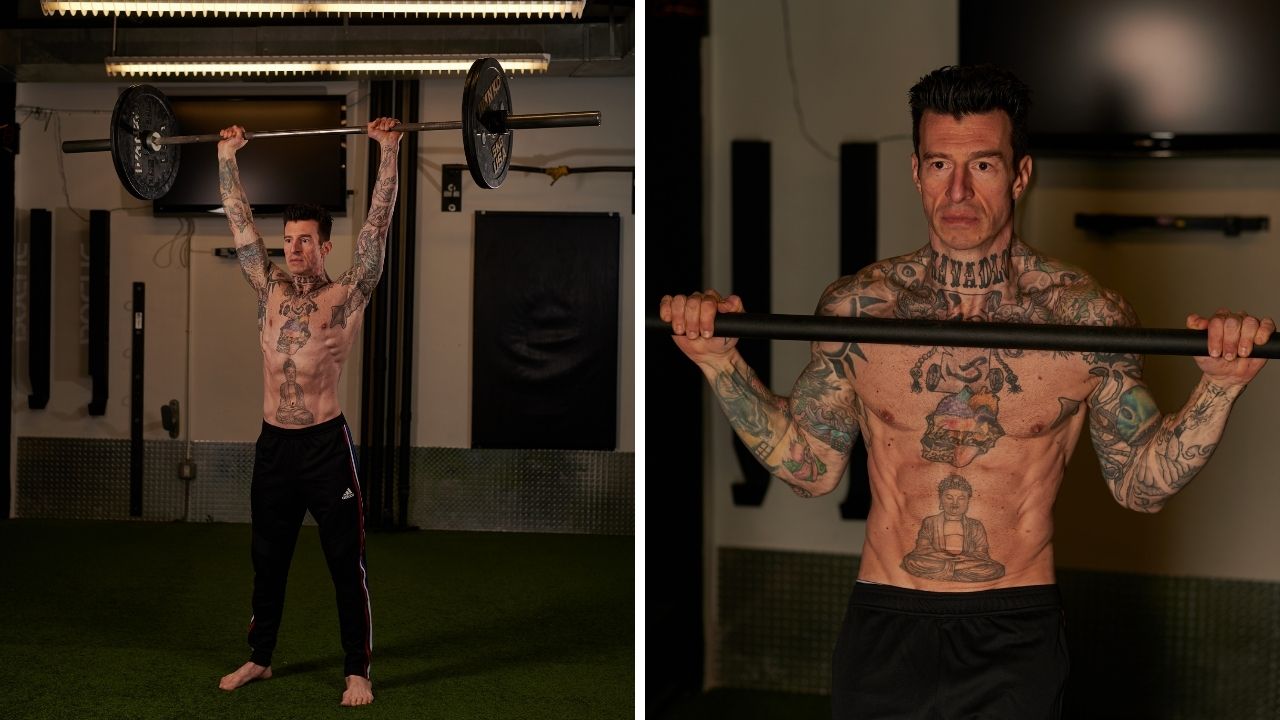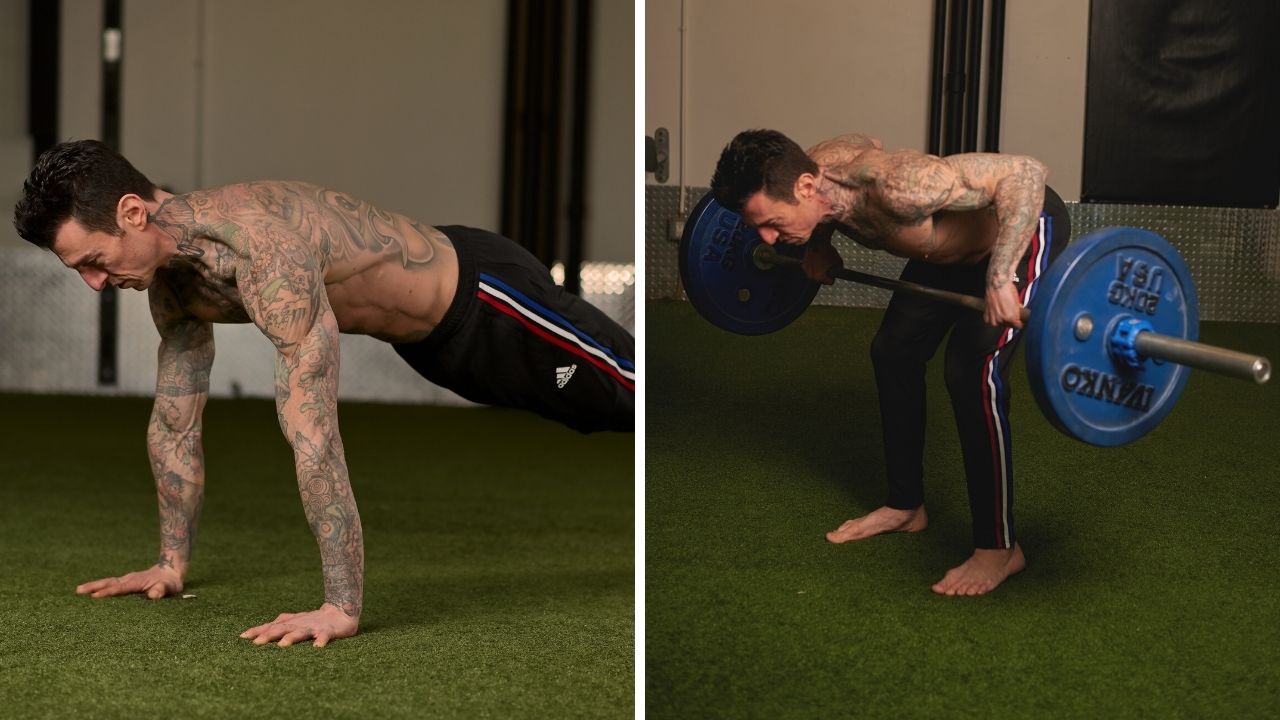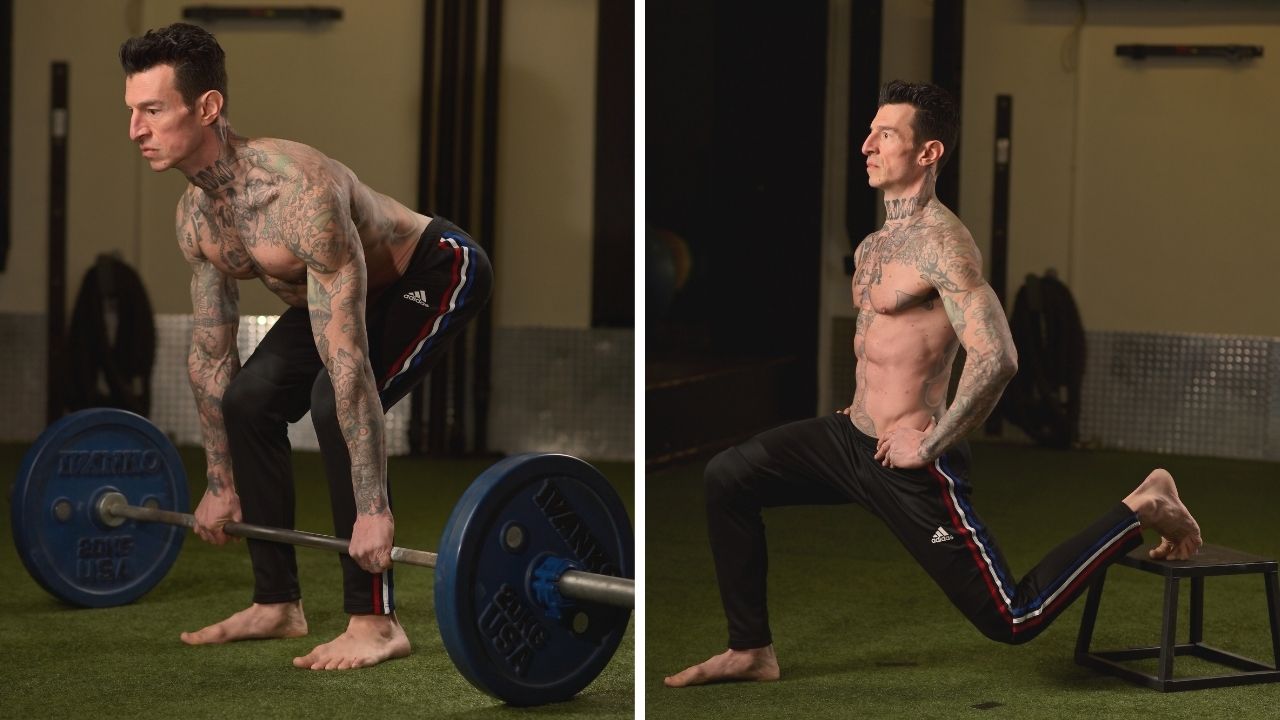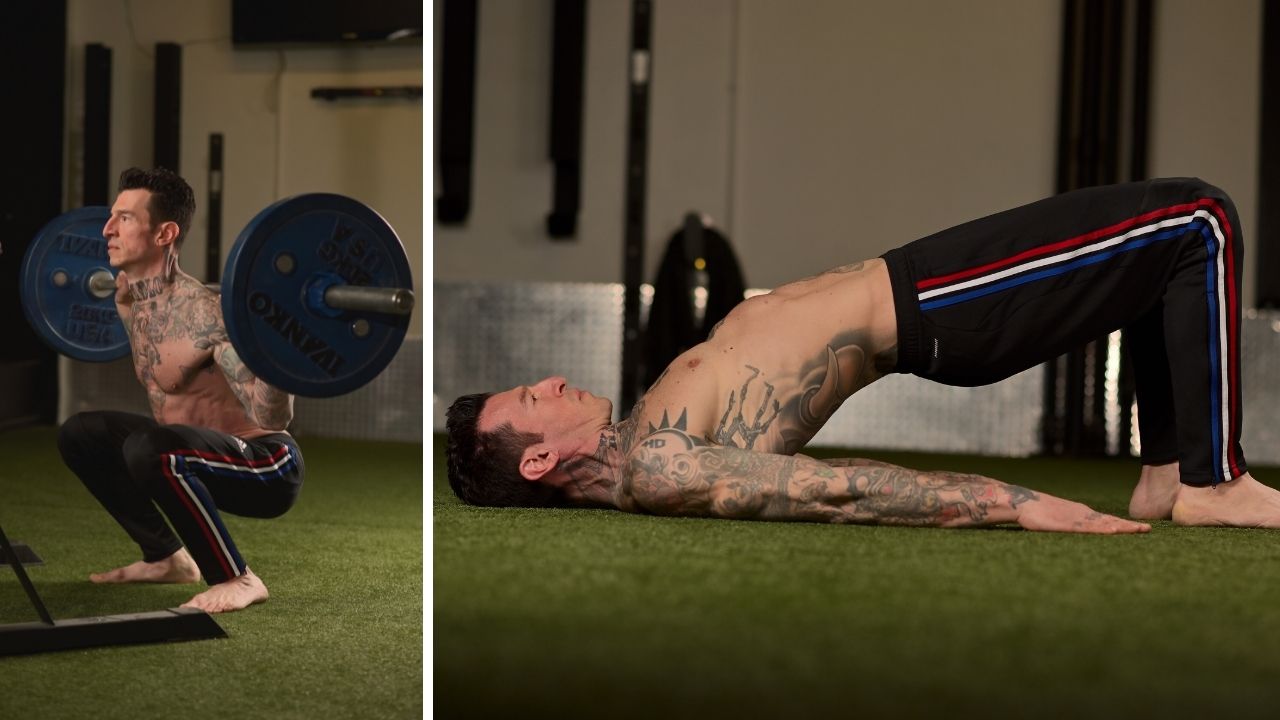Simple Bodyweight/Barbell Combos for Amazing Strength Part I — Push/Pull Supersets
by Danny Kavadlo
Bodyweight and barbell exercises can be combined in many ways. In this three-part series I will examine different applications in which one can successfully combine barbells and calisthenics for the best possible results. Today, let’s talk about "push/pull supersets."
The phrase push/pull refers to strength training combinations that employ opposing muscle groups for different exercises. In many cases, one exercise focuses primarily on flexion (whether of a specific muscle or any combination), while the other emphasizes extension. The term superset refers to the act of performing two different exercises in a row, with little to no rest in between. There are many advantages to doing push/pull super-sets. Here are just a few:
- Super-sets (push/pull or otherwise) allow you to perform one exercise while you recover from another. Therefore you can get more done is less time.
- Training opposing muscle groups back-to-back, without rest, provides a cardio/conditioning effect.
- Mixing up your routine can help you avoid mental plateaus and prevent you from getting stagnant in your workouts.
Here are four of my favorite push/pull supersets, broken down by Upper Body and Lower Body. I suggest that you get comfortable with each exercise on its own before incorporating it into a combo. Remember, it’s important to maintain muscular awareness and tension in your abs, back and glutes, as well as your hands and feet for every exercise in following push/pull supersets. Let’s Goooo!
UPPER BODY PUSH/PULL A – Overhead Press/Pull-up
Overview: The overhead press and pull-up are both foundational strength training exercises. This combo requires you to train these two sets of opposing, upper body muscle groups back-to-back.
How to Overhead Press: Hold a barbell approximately shoulder width across your upper chest using an overhand grip. Extend your elbows and shoulders and lift the bar all the way over your head. Pause briefly before lowering the bar back to the starting position.
How to Pull-up: Grasp an overhead bar with your palms facing away from you. Pull yourself up until your chin clears the bar. Avoid shrugging your shoulders or using any momentum. Lower yourself back to the starting position.
Why it makes sense: What makes these two exercises such a fine compliment to one another is that they are the inverse movement from one another. A vertical push followed by a vertical pull.
Trainer talk: You may substitute bodyweight rows for pull-ups for if needed.

UPPER BODY PUSH/PULL B – Push-up/Barbell Row
Overview: The push-up is one of the most effective (and perhaps the simplest) upper body exercises there is. Combining it with a dumbbell row allows you to train opposing movement patterns.
How to Push-up: Place your hands on the ground approximately shoulder width apart. Keep your feet together and your body straight. Bend your elbows and shoulders to lower your chest toward the floor and then press yourself back to the starting position.
How to Barbell Row: Stand up and hold the bar slightly wider than shoulder width with an overhand grip. Bend your hips to approximately 45° and your knees slightly, so that your torso is almost parallel to the ground. Pull the bar toward your chest. Pause briefly when the bar almost touches your chest, then lower the bar.
Why it makes sense: Like the previous combo, these two exercises compliment one another for the same reason, but this time it is a horizontal push followed by a horizontal pull.
Trainer talk: You may substitute hands-elevated push-ups if needed.

LOWER BODY PUSH/PULL A – Deadlift/Bulgarian Split Squat
Overview: Actually, this one is more of a "pull/push" than a "push/pull." I prefer starting with the pull in this case, as the deadlift is generally expends more energy.
How to Deadlift: Stand facing a barbell with your feet approximately shoulder width apart, and your shins are close to the bar. Hinge your hips, bend your knees and grasp the bar. Lift by pushing your hips forward, straightening your legs and digging your feet into the floor.
How to Bulgarian Split Squat: Stand in front of a bench with one foot on the bench. Lower yourself down until your front knee bends to approximately 90°. Pause briefly at the bottom before returning to the top position. Complete your set in its entirety and then repeat on the opposite side.
Why it makes sense: Although the deadlift is a full-body exercise, that big, pulling power comes primarily from the rear chain of the body. Following it up with pistol squats stretches the hamstrings, while emphasizing the quadriceps.
Trainer talk: You may hold onto a pole or steady object to assist your pistol squats if needed.

LOWER BODY PUSH/PULL B – Barbell Squat/Hip Bridge
Overview: Unlike the aforementioned pistols, barbell squats allow you to adjust the resistance without learning a new technique. Incorporating hip bridges allows for active recovery.
Barbell Squat: Get under the barbell so that it rests on your traps and grasp the bar tightly. Bend your hips, knees and ankles, lowering yourself down until the tops of your thighs are parallel to the ground or lower. Drive your heels down and extend your hips forward to return to the starting position.
Hip Bridge: Lay with your knees bent and your feet flat. Press your heels into the floor, lifting your hips as high as you can while creating an arch in your back. Pause briefly before returning to the starting position.
Why it makes sense: The hip bridge is not only a great counter to the squat, it also stretches the chest and shoulders.
Trainer talk: You may perform the hip bridges on one leg if it is not challenging enough on two.

This is just the tip of the proverbial iceberg. There are many others. Next week, I’ll discuss bodyweight/barbell combos that incorporate both upper body and lower body back-to-back.
Complete programs that combine calisthenics and free weights (as well as programming, structure, diet and recovery) can be found in my newly released Dragon Door publication,
Hybrid Strength Training.
See you next week!
-DK
Back